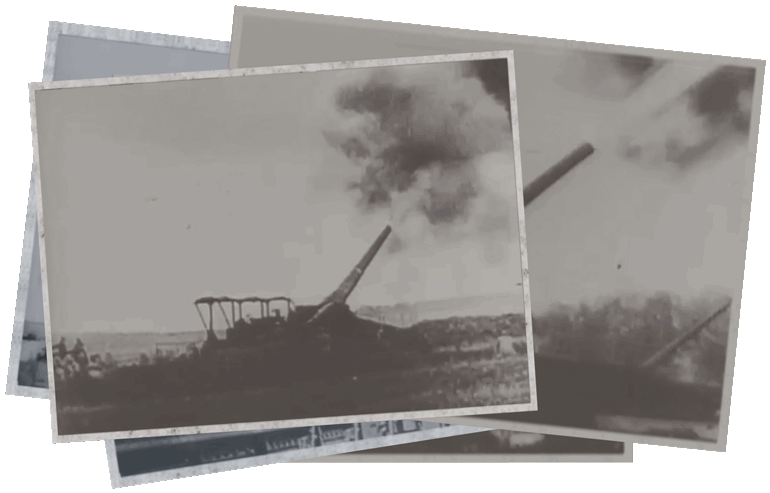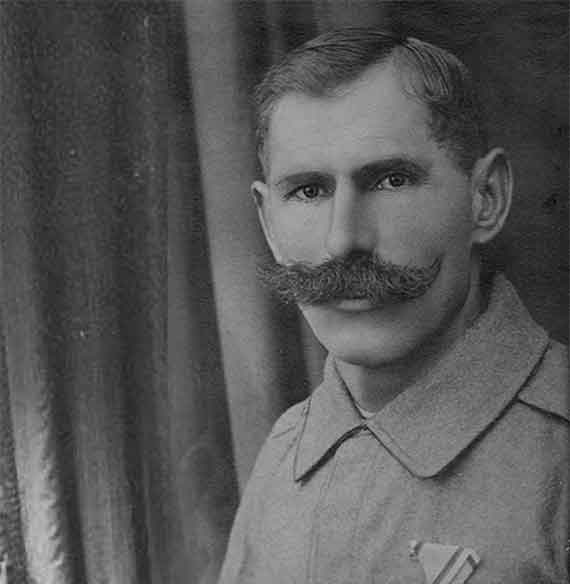 ISTVÁN FÁBOS
ISTVÁN FÁBOS
THE AUSTRO-HUNGARIAN EMPIREsought to contain separatist nationalists within the empire and prevent Russian expansion further into eastern Europe. It was still led by the old-fashioned, 84-year-old Emperor Franz Joseph.
THE GERMAN EMPIREwanted to expand its empire and become the preeminent European power. It was ruled by the ambitious, brash and braggy Kaiser Wilhelm II.
THE RUSSIAN EMPIRE acted as the protector of all Slavic peoples, often to its own territorial benefit. It was led by the repressive Tsar Nicholas II, second cousin to Wilhelm.
THE OTTOMAN EMPIREstruggled to maintain its territory due to economic stagnation, internal divisions, and predatory neighbors. It was ruled by the increasingly marginalized Sultan Mehmed V.
THE KINGDOM OF SERBIA sought to unite south Slavs under the Serbian crown, especially those living under Austro-Hungarian rule. It was led by the modernizing Peter I.

The two German-speaking empires, Austria-Hungary and Germany, formed a tight alliance. On the other hand, Russia and Serbia, sharing a sense of Slavic brotherhood, vowed to protect one another. Were these competing powers inevitably destined to collide, or did an unintended chain of events lead to war?

Franz Ferdinand

Franz Joseph
Franz Ferdinand, an impetuous hothead who lacked in charm, was heir to the Austro-Hungarian throne. He wanted to restructure his uncle’s empire and give Slavs greater rights and autonomy. Both Emperor Franz Joseph and Maygar nationalists preferred that things stay the same.
One of Ferdinand’s plans, Plan U (U as in “Ungarn” or Hungary), was to invade Hungary via train and the Danube, take over Budapest, install a Habsburg military governor, and end the Magyar nobility’s nationalist impudence for good.
By 1914, Austria Hungary had expanded its empire deeper into the Balkan Peninsula. Franz Ferdinand’s military tour of Sarajevo in June 1914 gave the angry Serbian nationalists an opportunity to retaliate.


The drama as interpreted by an Italian weekly...
Austria-Hungary, blaming the Serbian government for the assassination, delivered a ridiculously unreasonable 10-point ultimatum.
“SUPPRESS EVERY PUBLICATION
THAT INCITES HATRED AND
CONTEMPT OF THE MONARCHY.”

“REMOVE ALL MILITARY OFFICERS
AND OFFICIALS GUILTY
OF CARRYING ON PROPAGANDA
AGAINST AUSTRIA-HUNGARY.”
Winston Churchill, who commanded the Royal Navy in the Kingdom of England, called this ultimatum “the most insolent document of its kind ever devised.”
The Serbian government accepted some of the demands but politely rejected others—and these rejections were enough for Austria-Hungary to declare war against Serbia.
“SERBIA MUST DIE!”

AUSTRIA-HUNGARYand Serbia started the conflict, but a month later, practically the entire European continent was at war because of various military alliances. Germany, Austria-Hungary, the Ottoman Empire, and Bulgaria made up the Central Powers. They opposed the Allied Powers of Russia, Great Britain, France, and Serbia (later including Italy and Romania as well).
With a war underway, Austria-Hungary needed soldiers. Since rural folks were easier to round up than urbanites, far more Hungarian men were drafted from villages than from cities.







People were told they needed to fight for their homeland and their freedom because France, England, and Russia had conspired to make them all slaves. They were also told that this war would be over in a snap. No one could prepare these poor peasant men for the massive, unnecessary bloodbath that lay ahead.

WARFAREhad drastically changed since the Habsburg Empire’s last brief war in 1866. New 20th-century weaponry and technology—self-loading machine guns, magazine-fed repeating rifles, TNT-aided cannons and Howitzers - could now kill people from miles away and on an industrial scale.



Any European military that did not adapt faced ruin. Austria-Hungary, under the elderly Franz Joseph, did not adapt, and sent men to war with horses and swords rather than airplanes and artillery.

The Austro-Hungarian army was also undersized, partly because the Hungarians were more concerned about building their own Honvédség than contributing to the common army.
HONVÉDSÉG. Meaning “defender of the fatherland,” the Honvédség (army) originally formed in 1848 to fight against the Austrian imperial army. The Hungarian army was reformed after the 1867 Compromise.
Their principle mission was to fight against the Serbs, Russians, and after 1915, the Italians. They found themselves outgunned and outmaneuvered at nearly every turn.
THE General in charge of the Austro-Hungarian Army and Navy, Franz Conrad von Hötzendorf, was somehow assured that his troops’ new grey-green camouflage uniforms would give them adequate security against an array of miraculous 20th-century weaponry that could easily blow them to bits. Ensconced in a villa 75 miles from the front, he sent his men to slaughter while he himself led a comfortable routine of daily naps, long lunches, leisurely walks, and hours spent reading the newspapers.
By the end of 1914, almost half of the Austro-Hungarian forces originally mobilized had been destroyed, with the number of casualties and captives exceeding two million.
My great-grandfather, István, having been one of the originally mobilized troops in 1914, was moved from Serbia to the Italian front in 1915 to defend the Doberdo plateau near Italy’s Isonzo River. This would be the site of an awful series of 12 battles, known as the Battles of the Isonzo.

1915
WHEREASAustria-Hungary’s noblemen frequented the Italian Riviera on holidays, it was only in war (and with the possibility of death, disease, or disability) that peasants like István could travel the world.




Over and over again, the Italian troops launched an uphill frontal attack, bombarding the Austro-Hungarian forces with heavy artillery, at which point they were exposed to a rain of bullets from above.
Every battle led to huge losses on each side, but mostly for the Italians, who were easy targets as they moved up the slope. After eleven bloody battles by 1917, both sides on the Isonzo River were completely worn out.




1917
THISseries of battles went on for two years, five months, and four days. The stalemate only ended when the German army, with its vastly superior military technology, took over the failing Austro-Hungarian war effort. They defeated the Italians through a combination of poison gas, mortars, mountain guns, flamethrowers, and hand grenades. The German soldiers annihilated the Italian troops in 15 days.

THINGS were awful at home as well. Nearly every rural and working class man had been called up to the front, so farm work was left to women and children. My great-grandmother, Regina, relied heavily on her two sons, József (14) and Pista (my grandfather, 13) to help run the farm, and faced the real possibility that her husband might never return.
Mrs. Böthi's husband never returned. She was Regina's neighbor. She wrote a letter to her husband on May 7, 1917 (he died before he received it). In it she described her almost impossible workload and explained her struggles with taking care of the cattle, the crops, and the children. Mrs. Böthi also shared the news of the most recent village calamities:

Two thousand men from Marcali were sent to the front; 246 were killed and countless more were wounded.



RUSSIApulled out of the war in 1917, ripped apart by peasant uprisings and a surging Bolshevik Revolution. But the Allied Powers were bolstered by the United State’ entry into the war the same year. Germany, the Ottoman Empire, and Austria-Hungary held out until mid-1918. None of these empires survived the four years of bloodshed.
This GREAT WAR was a catastrophic failure.
8.5 million dead


21 million wounded

7.75 million prisoners of war
Of all the countries involved in World War I, Austria-Hungary’s forces suffered the most devastating losses per population: 90 percent of the 7.8 million soldiers were either killed, maimed, or made POWs.
Around the world, a new vocabulary developed to explain what he and millions of other soldiers were going through.
In German it looked like this:
NERVENZERUTTENDEN (NERVE-WRECKED)
NEREVENZERSETZENDEN (NERVE-DISSOLVED)
NERVENSTORUNGEN (DISTURBANCES OF THE NERVES)
NERVENZUSAMMENBRECHEN (NERVOUS COLLAPSE)
My great-grandfather, István, had lost his Selbst-Kontrolle (self control) and was experiencing Sinnesverwirrung (confusion of the senses). He was alive, but like the rest of Hungary, he was a mess.


